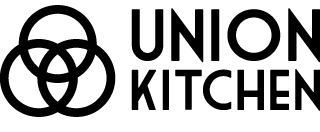How to Determine your Core Consumer
Have you ever wondered how to determine who your core consumer is in order to effectively market your product? In this article, we will discuss who your core consumer is, how to determine who your core consumer is, and how to verify if your assessment is accurate. Understanding your core consumer provides you with an opportunity to connect with a portion of the market who needs your product, resulting in repeat customers and therefore more sales.
Who is a Core Consumer?
Your core consumer is a group of people that goes out of their way to buy your product. They desperately want the solution that you are offering to their pain point. They are okay with trying out the product even before all the additional features are worked out, packaging finalized, and messaging perfected because their pain point is that significant for them.
Core consumers allow you to make decisions and have a clear picture of who you are marketing your product towards. People want a lot of different things. Some want really salty snacks, others want healthier options. Sometimes, customers contradict themselves and want healthy and salty snacks! The core consumer anchors these trade-offs and provides clarity. As a brand, you can’t be everything to everyone. If you try to market your product to everyone, you will lack specificity and risk not resonating with anyone.
Your core consumer is a wide range of people, you risk not properly resonating with anyone.
In order to target your core consumers effectively, you must tailor your products’ packaging, marketing, and more to appeal and speak to them.
How Do I Determine My Core Consumer?
Because you and your food business are just starting out, you don’t have access to comprehensive sales data and clear consumer insights. Without this information, it can appear to be difficult to identify what consumers are most invested in your products.

To better understand your core consumer and how they make decisions, you should visit grocery stores to scope out your competitors. Take a look at your competitors’ packaging. How are they communicating their product to consumers? Who would this appeal to? What is the size and format of the product? What callouts do they use? What price point are they at?
For example, Coca-Cola is a delicious and sweet soda that is known for its high sugar content. With that being said, would their core consumer be 60 year old women who prioritize their health and wellness? Probably not. In fact, Coca-Cola’s core consumers are within the age bracket of 10-25. This is likely because young people are not fully aware of the negative effects soda can have.
Another effective way to learn more about your core consumer is through demos and conversations with consumers. By giving customers the opportunity to try your product and receive feedback, you can start to see what group of consumers really enjoy your product.
What is a Buyer Persona?
To define your core consumer, you should create something called a buyer persona. A buyer persona is a semi-fictional representation of your core consumer. It’s created based on data and selected educated guesses about demographics, behaviors, motivations, and goals. Over time, your buyer persona will become more and more specific as you have more sales data and direct, anecdotal feedback.
Buyer personas provide structure and context for your business. Learning about your core consumer through buyer personas, including their challenges, goals, demographic traits, helps you determine your strategy from where you sell your products to price point and messaging. For example, say you’ve decided your buyer persona is a mother with three kids who lives in the suburbs and is budget-conscious. Knowing all of this, it then wouldn’t make sense to launch in a high-end, boutique shop in the city.
To determine your buyer persona, you should answer the following questions:
- What is your core consumer's largest pain point? Financial, productivity, or physical?
- What is their preferred method of communication? Call, text, Facebook, Instagram, Twitter, TikTok?
- What are their top 3 favorite food brands?
- What claims do they care most about? Non-GMO, organic, calorie count, plant-based, keto/paleo, protein count, or is it all about price?
- What is their purchasing motivation? Convenience, price, health, taste?
- Where do they like to shop?
- How often do they shop?
- How often do they eat out?
How do I Verify My Core Consumer?
To complete your buyer persona, you will need to take a few educational guesses. So, how do you verify that you have properly identified your core consumer? You can:
- Demo - Pitch your products to consumers, give them samples, and receive feedback on how they like your product
- Talk to buyers- Buyers have extensive knowledge on what consumers want. Pick their brain and gain insights from them as to who you should target.
- Gain objective consumer feedback (not family or friends)- In order to get objective feedback, be sure to send samples to friends of friends or people you do not know directly. In order to be successful, your product must be tasty and appealing to a group of people.
If you have properly identified your core consumer, great! If you were a little off, adjust your strategy to fit the needs of your newfound core consumer.
To better understand how to find your core consumer, watch our case study on how Compass Coffee found their core consumer and adjusted their strategy accordingly.
Your core consumer is the type of person who is in desperate need of your product. They have a clear pain point and are looking for a solution that fits their needs. In order to find your core consumers, you should visit grocery stores, host demos, talk to buyers, and create your buyer persona. Through consistent conversations and market research, you will be able to determine your core consumer and market your products effectively.

Comments